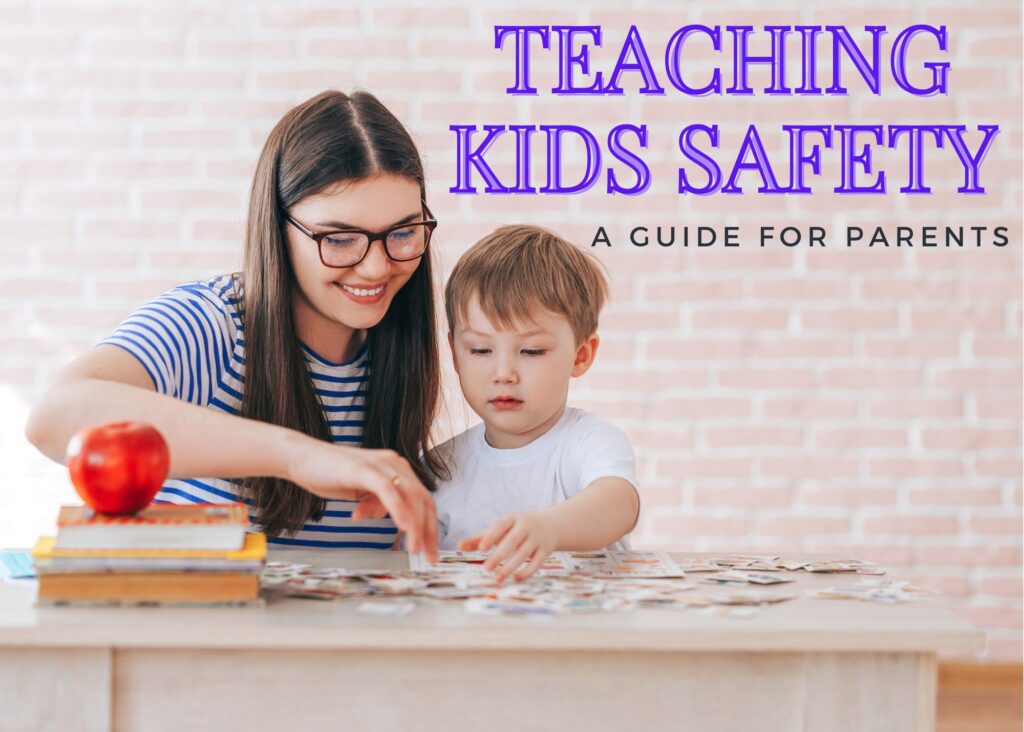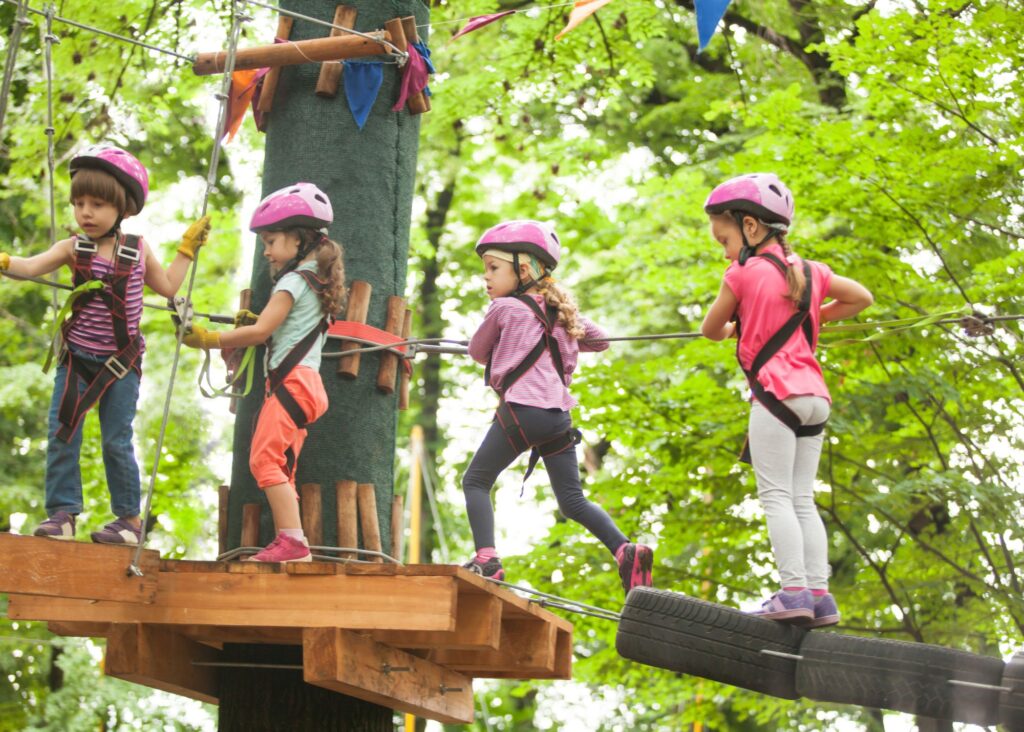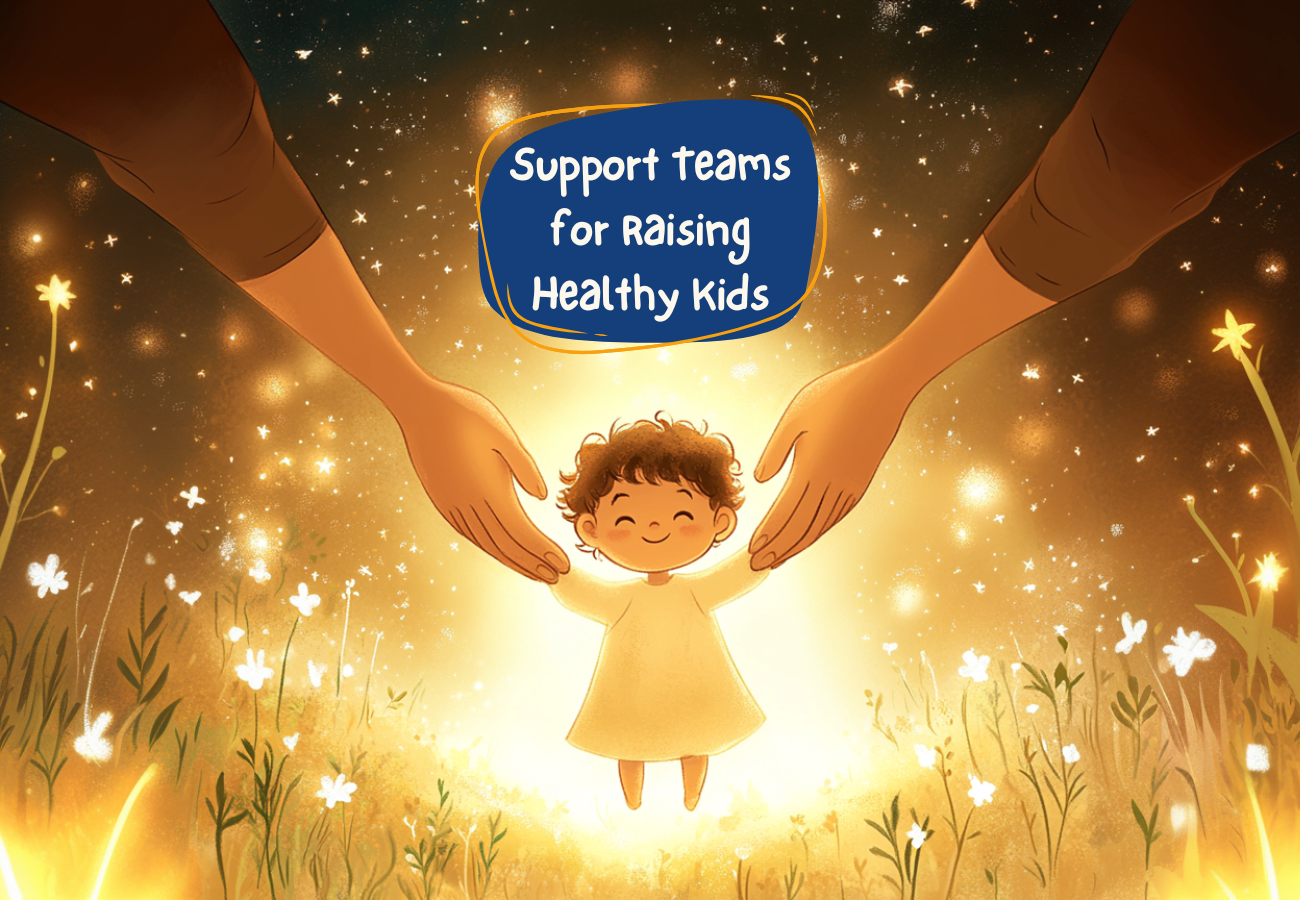Teaching Kids Safety: A Guide for Parents

Kids’ safety is an important talking point nowadays. Although the modern world provides dozens of opportunities for kids’ growth and development it also creates even more unsafe situations. No wonder parents get more and more anxious about their little sons and daughters.
Fortunately, there are a lot of useful tips and strategies for learning about children’s safety.
What Is Child Safety?
Children are too small and inexperienced to evaluate the level of danger as well as predict negative consequences. That’s why parental support is needed. You should start with the basics and explain to your little one the most obvious thesis such as:
- not all people are kind;
- some may have bad intentions;
- never trust people if you don’t know them;
- there`s a personal space no one is allowed to overstep;
- the best way to protect yourself is to avoid strange people.
Explain to your little one these simple things. Begin by persuading them that some people can be dangerous and evil. Kids, due to their naivety may reject these theses. So, you should be ready to provide some examples. Also, use some video resources on YouTube.
One more difficult topic to explain is personal space. You must be clear here and name the things as they are. Say directly that no one is allowed to touch your little one’s body, grab his hand, stroke his hair, etc.. If someone dares, they have to turn to adults immediately.
Tell your little ones not to believe everything people say. You may start by persuading them that only close relatives and friends are the ones they can rely on. All the other people cannot be treated the same way. Thus, kids have to be responsible and consult their close ones first before trusting strangers.
Strangers aren’t the only source of danger. Unfortunately, kids can become victims of accidents as well. According to Statista, 30% of deaths among kids aged 0-4 years were caused by unintentional injuries in 2019. And that’s horrible. Parents have to tell their children everything about safety at home, outdoors, in vehicles, nature, etc.
How to Teach Kids Safety?
You should teach kids safety rules based on different circumstances:
- crossing the street;
- riding a bike;
- using home appliances;
- swimming in a pool;
- playing outside, etc.
Don’t try to teach kids all at once. That won’t bring any results. Instead, concentrate on only one set of rules and practice them. Surf the net for some interesting activities. Find some games to practice crossing the road and learning road signs. Shift to real-life situations after a little bit of theory. Model some situations or just go outside and let your little one demonstrate his knowledge of crossing the road safely. Do the same with the home appliances case. What about playing outside, take into account many factors such as:
- the type of games your little one plays;
- the most common kinds of danger (heavy traffic, deserted area, abandoned buildings, etc.).
After analyzing your case, get to the actions and make kids aware of the dangers and plan how to avoid them. Also, if your kid prefers hyperactive games, it’s time to give new safe ideas. Take, for example, these summer activities for kids. They provide no danger, being funny and interesting at the same time.

How To Boost Your Kids` Safety Awareness?
You may devote months to learning safety rules, but a kid may forget them within days. What you need are constant practice and one more life hack. Here it is.
Use every favorable moment to explain to your kid how dangerous the world can be and how to stay safe. Every time you see a case to learn, introduce it to your child. For example, you may see a boy crossing the road not by the rules. Pay your little one’s attention to the rule-breaker and analyze together what he did wrong and what had had to be done. If you were to spend a “Yes Day” with your kids, feedback about safe behaviour during it would be a great talk.
There are many unsafe situations you may witness almost every day. Remember that as long as you discuss it with your kids, they’re more likely to be only a witness of accidents and not a victim.
You can also analyze your kids’ mistakes and come up with a plan on how to avoid them in the future. If your little one forgets to wait until the green light, think about how to creatively teach him to be careful. Let him learn a relevant verse he should say out loud every time he faces a road to cross.
Children Online Safety
Small kids are the most exposed to danger as they know the least about how insidious the internet could be, especially in terms of social media.
If your kid is using it on his own you should take measures and take it under control until it’s too late. There are no advantages to self-willed internet surfing. Kids may become internet-addicted not to say about being cheated or abused. Parents have to control:
- web sites their little one looks through;
- amount of time kids spend at screens;
- accounts children accept the friend request from;
- kind of content the little one is interested in.
You have to discuss all the dangers with them. Be persistent but not stick to prohibitions. Be rather comforting and explain everything you insist on. Don`t say that you forbid kids to do some actions. Say that there are certain rules and children have to follow them. Also, tell them about the consequences of their disobedience.
Explain to kids all the dangers and how to provide personal safety giving them arguments and examples. For that matter, you “mustn`t do it” doesn`t work here. You should have some proof.
The most common topics are those concerning:
- chatting with strangers;
- sharing personal data;
- clicking on suspicious links, etc.
Be Ready to Talk About Kids` Safety
Children often have lots of questions, but they are afraid to ask the hottest ones as well. The most common reason for their hesitation is your too emotional reaction to their actions or confessions. To avoid it, you must show your children that you are ready to listen to them. You should persuade your daughter or son that they can trust you and that you will always support them and not reproach. For it, make sure you don`t:
- punish your child for telling the truth;
- get angry after you hear unpleasant confessions;
- criticize kids for their questions;
- make fun of their problems.
In such a way, you not only help your kid to maintain his personal safety but also teach him communication skills.
Conclusion
One cannot teach kids safety within several days. You should start with basics, each time telling more about personal safety and dangers that await kids outside their homes. Take into account your little one’s lifestyle, adjusting to his current needs. Be persistent, patient, and consistent. Don`t leave it to chance and take care of kids` safety right now!
More articles

The Support Teams Every Parent Needs for Raising Healthy Children
Parenthood is often seen as one of life’s most fulfilling experiences, but it’s equally known for its challenges. From sleepless nights with a newborn to the emotional twists of teenage years, raising healthy and well-adjusted children takes incredible energy, patience, and support. While parental love and commitment are irreplaceable, no one should have to take […]

How Lawyers Raise Disciplined Kids By Focusing on Logic, Not Fear
Lawyers spend their careers mastering logic, reasoning, and persuasive communication skills that often seep into how they parent. Most of us can imagine that practicing law is already quite intensive. However, when combined with raising kids, it can be overwhelming. In a survey of over 8,000 lawyers, it was found that 60% of working mothers […]

Tips for Parents to Boost Their Child’s Communication Skills at Home
Effective communication forms the foundation of a child’s academic success, social relationships, and emotional well-being. However, for many children, mastering these skills presents a significant challenge. According to recent data, nearly 1 in 12 U.S. children aged 3–17 has experienced a disorder related to voice, speech, language, or swallowing within the past year. Among them, […]



